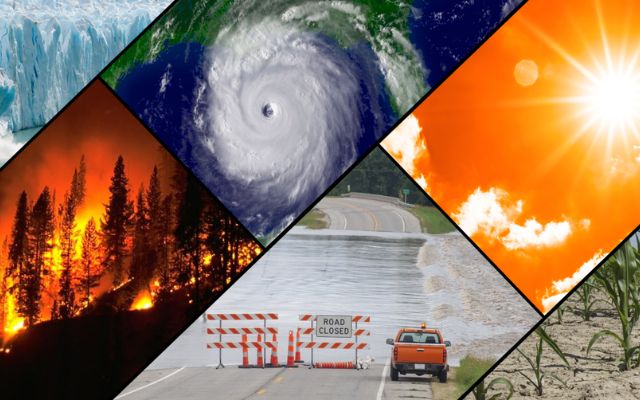A Look Ahead: Climate Trends and Weather Predictions for 2025
As we approach 2025, the need to address climate change and weather unpredictability increases.
Following the record-breaking temperatures and catastrophic weather events of 2024, experts predict that environmental difficulties will persist, if not worsen, in 2025. So, this article delves into expected weather patterns, climate changes, and the efforts needed to counteract their effects.

Global weather predictions and climate changes for 2025
Global Temperature Trends
Global temperatures are expected to climb further due to El Niño and La Niña cycles, according to scientific models. The average temperature is anticipated to rise by around 1.5°C over pre-industrial levels, pushing ecosystems and populations to their limits.
Furthermore, heatwaves are predicted to worsen, especially in South Asia, southern Europe, and North America, exacerbating urban heat island effects in highly populated areas.
Escalation of Storm Activity

There may be more frequent and intense storms in 2025
Storms, including hurricanes and typhoons, are forecasted to increase in frequency and severity in 2025 due to warming oceans. The Atlantic hurricane season may witness more Category 4 and 5 hurricanes while Southeast Asia braces for destructive cyclones.
Additionally, inland regions like the American Midwest and parts of Australia face heightened risks of severe thunderstorms and tornadoes, posing threats to lives and economies.
Rising Sea Levels & Coastal Risks
Rising sea levels continue to threaten coastal towns. The Maldives, Bangladesh, and the Pacific Islands are among the countries most vulnerable to erosion, floods, and displacement.

Rising sea levels will continue to threaten coastal communities
Coastal megacities like New York, Jakarta, and Mumbai face additional risks from rising seas and storm surges, emphasizing the importance of strong coastal defenses and adaptation strategies.
Agriculture & Food Security
Unpredictable weather will pose a challenge to global agriculture in 2025. Droughts, heatwaves, and irregular rainfall are predicted to impact agricultural output, particularly for key crops such as wheat, rice, and corn.
Moreover, water shortages in dry parts of Africa, South America, and the Middle East may aggravate food insecurity, thereby increasing prices and worsening socioeconomic instability.
Climate Migration

Watch out for climate migration
Climate-induced migration is expected to grow considerably. Rising sea levels, lengthy droughts, and devastating storms could displace millions, especially in areas already plagued by political and economic instability.
Furthermore, comprehensive global solutions like as infrastructure development, humanitarian aid, and relocation programs would be required to address this escalating catastrophe.
Adapting for Resilience

The importance of adaptation and resilience in to fight against climate change
Building resilience to climate change is crucial. Key initiatives include developing early warning systems for harsh weather, implementing sustainable agriculture methods, improving urban planning, and investing in green infrastructure.
Water conservation and effective irrigation systems will also be essential in managing finite resources.
Importance of Global Cooperation
Addressing climate concerns in 2025 requires worldwide collaboration. International climate agreements, scientific collaboration, and grassroots movements are critical for promoting responsible environmental behavior.
Governments must uphold their climate obligations and accelerate progress toward net-zero emissions.
![10 Health & Safety Precautions During Rainy Season [Be Careful]](https://admin.goweatherforecast.com/images/1732692097.png)








0 Comments
Leave a Comment
Your email address will not be published. Required fields are marked *